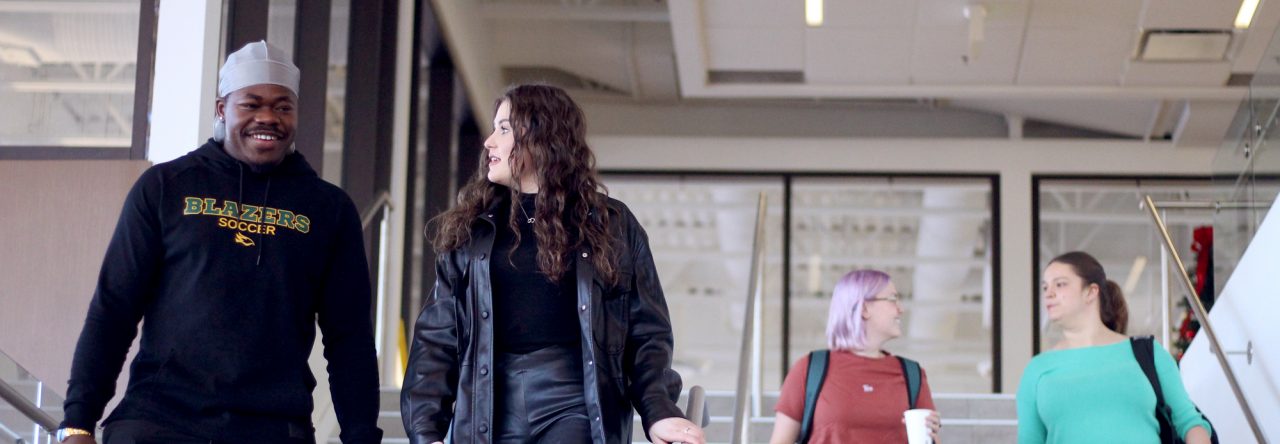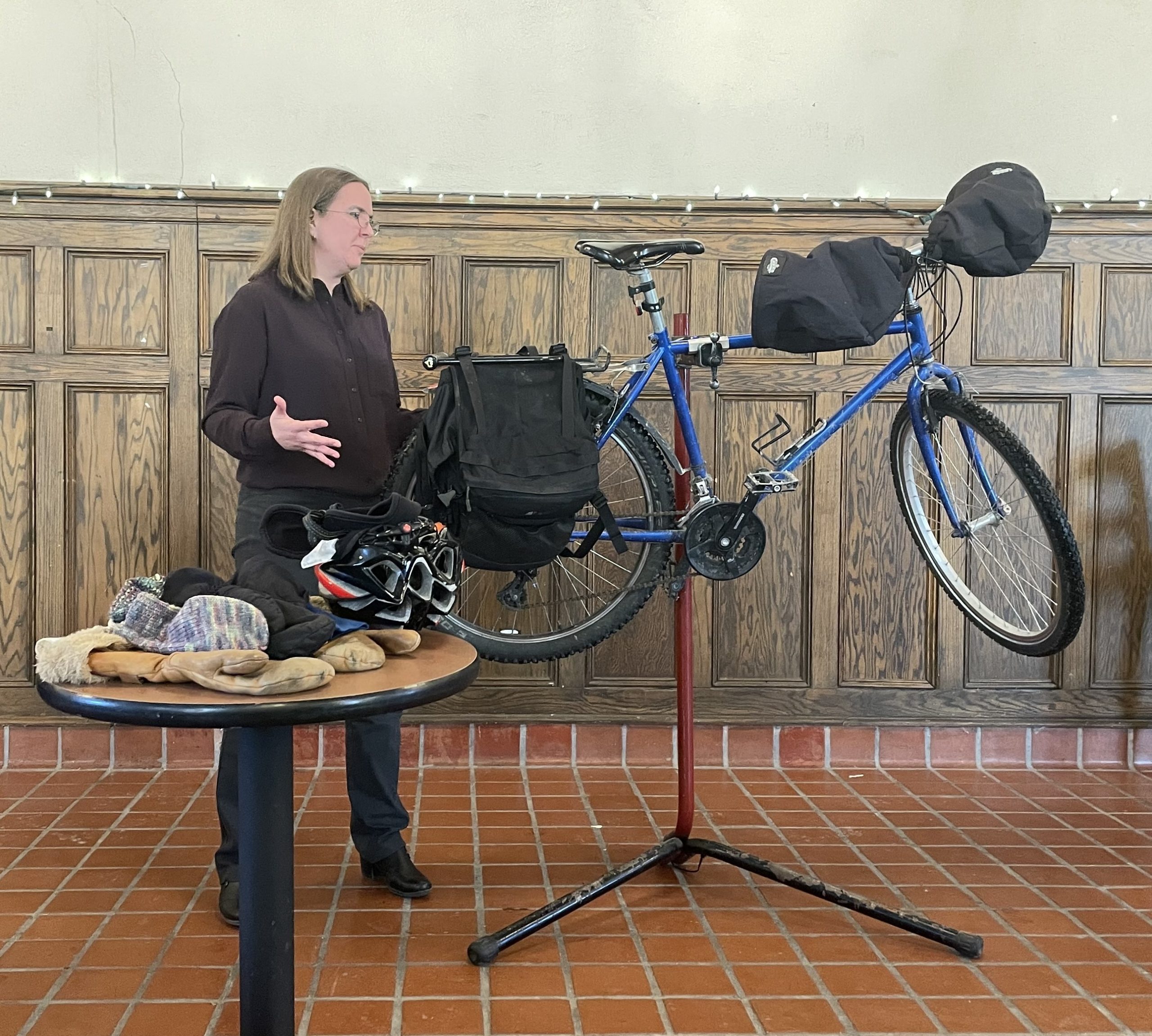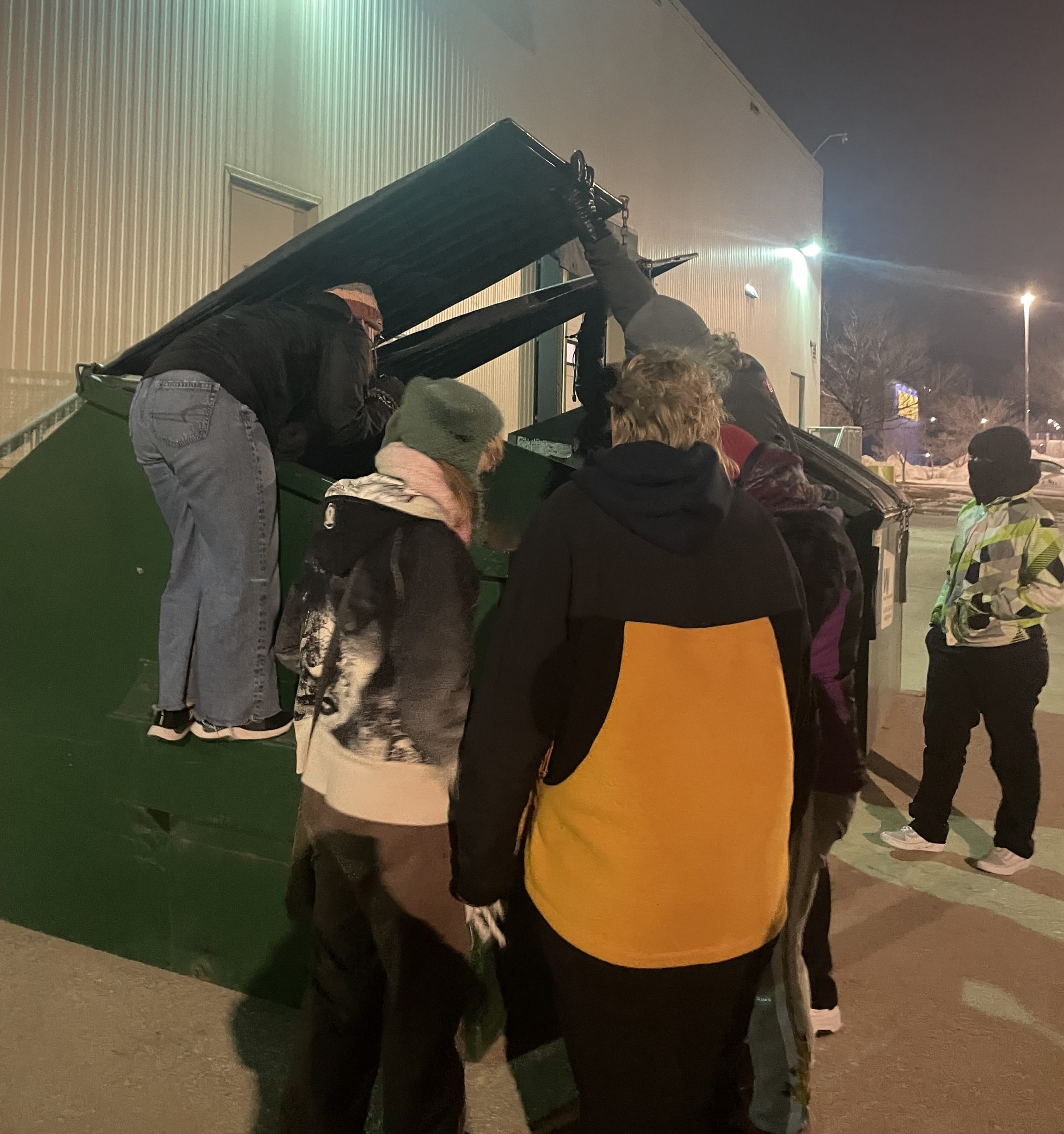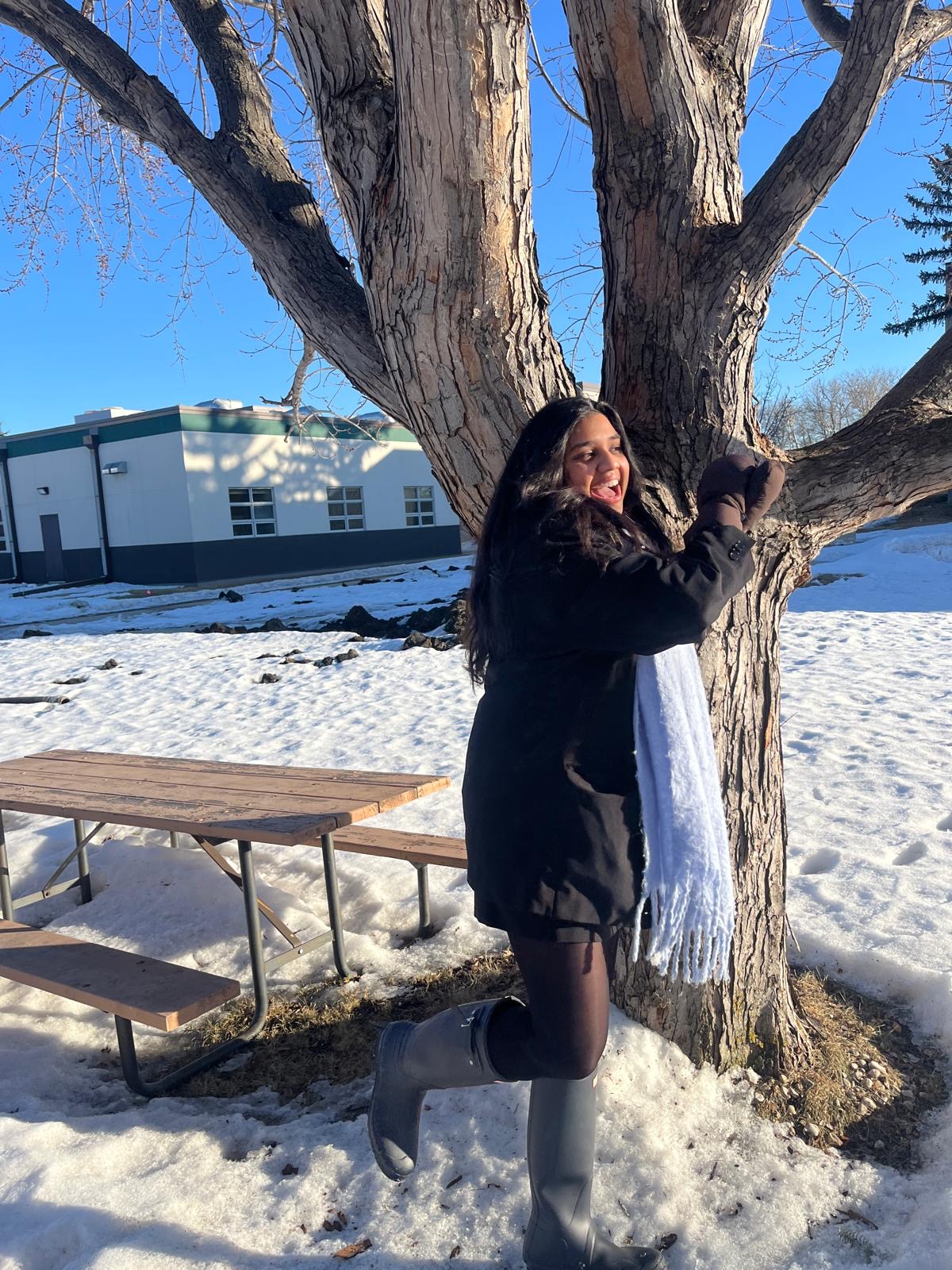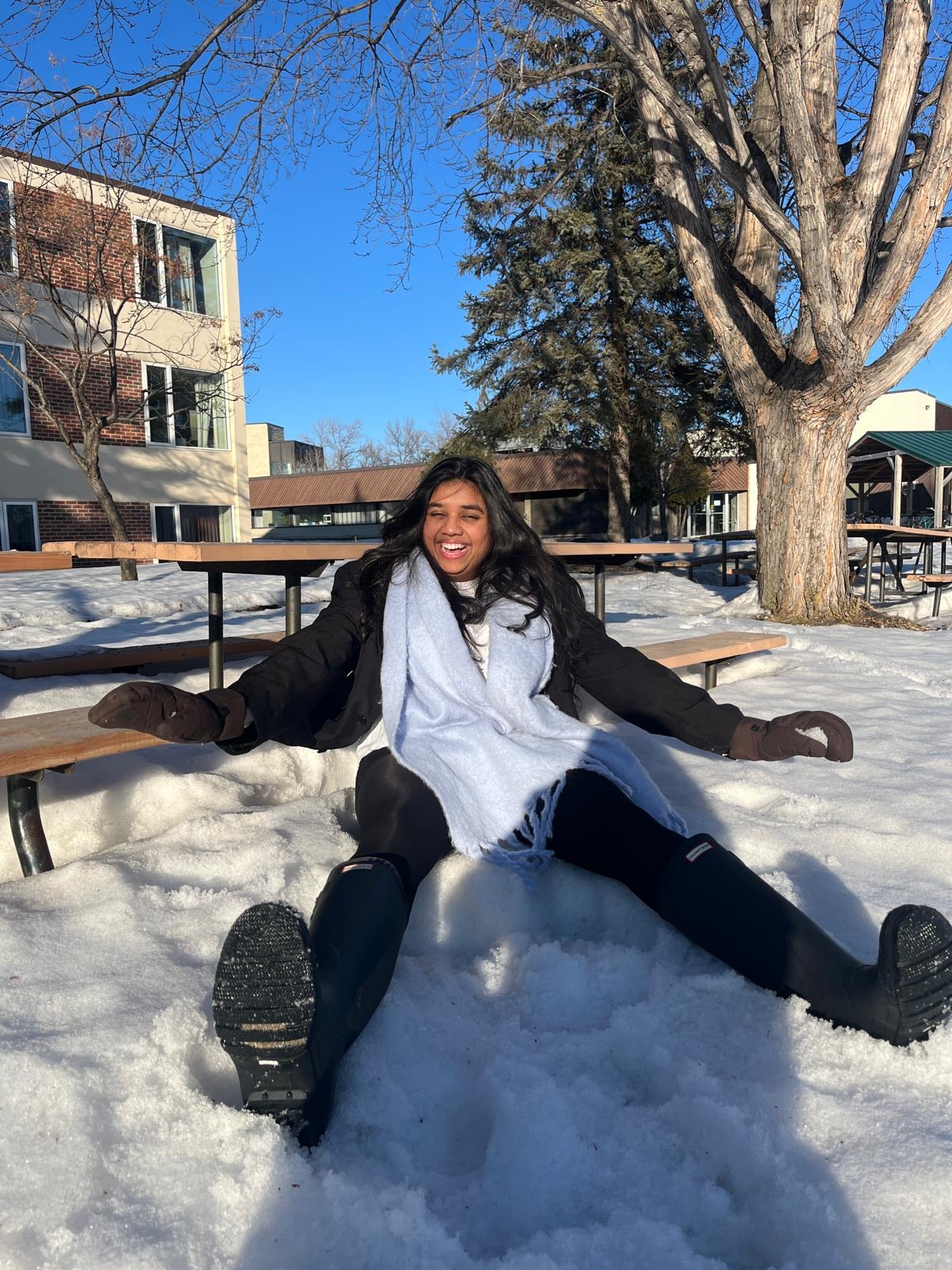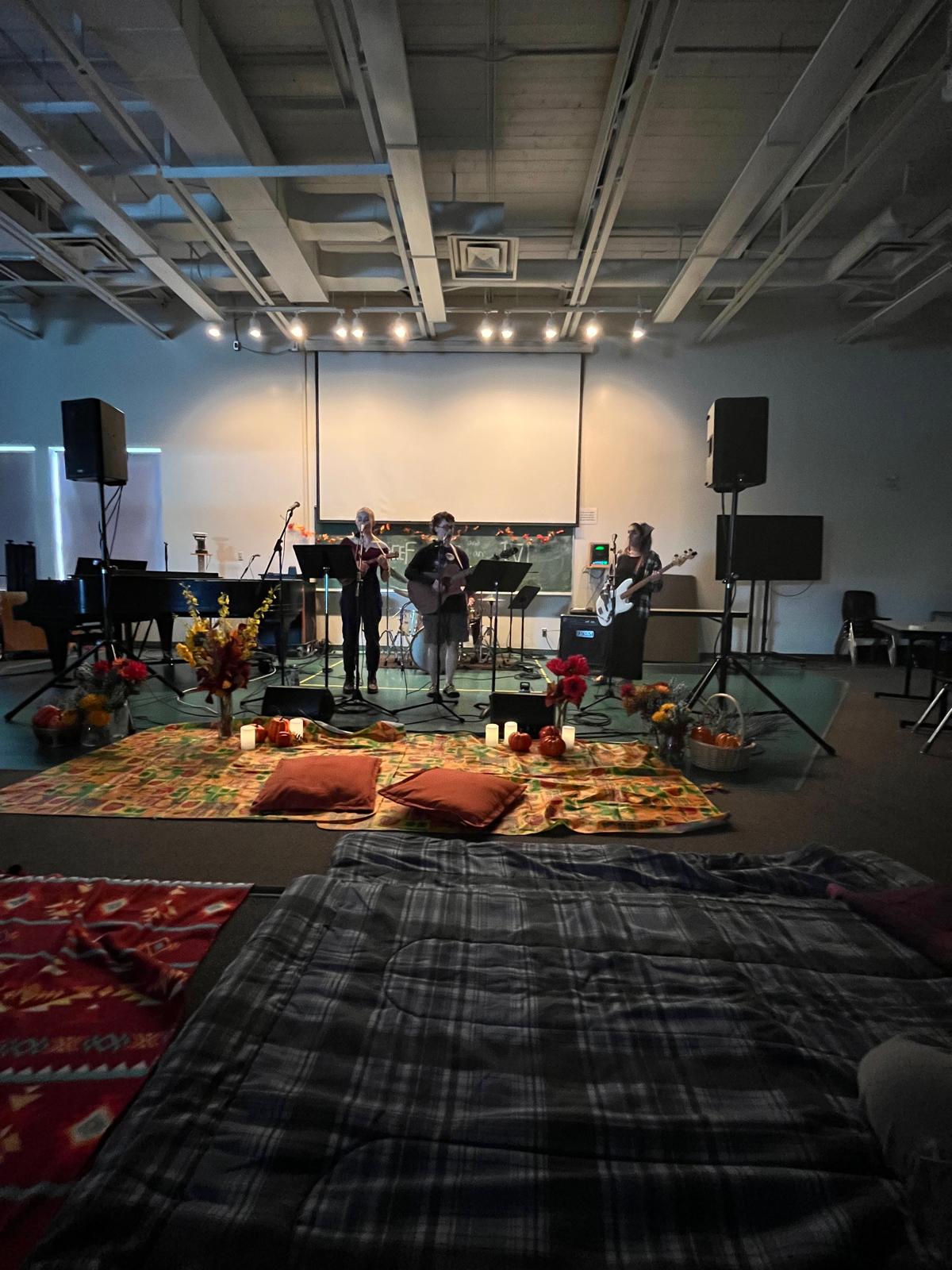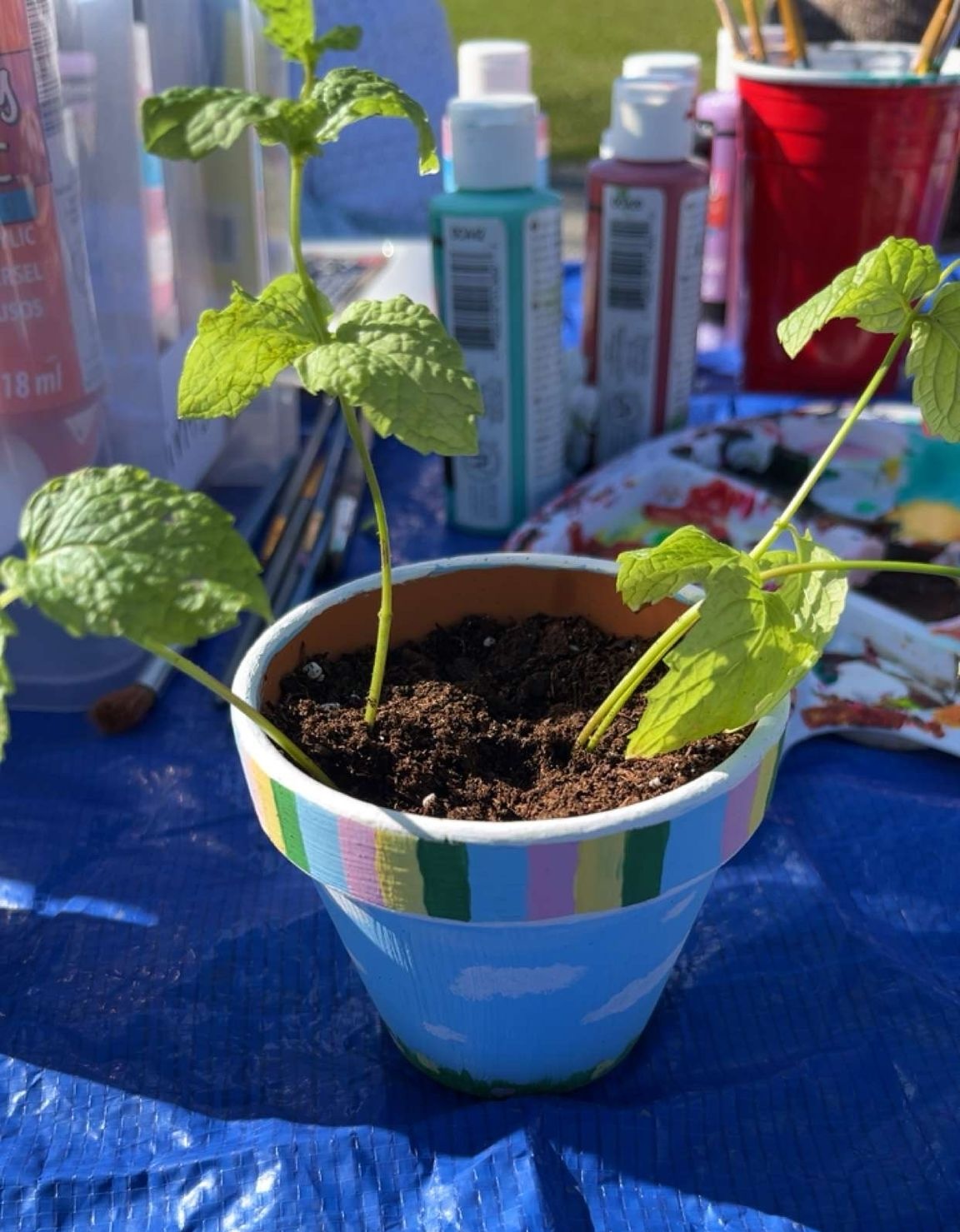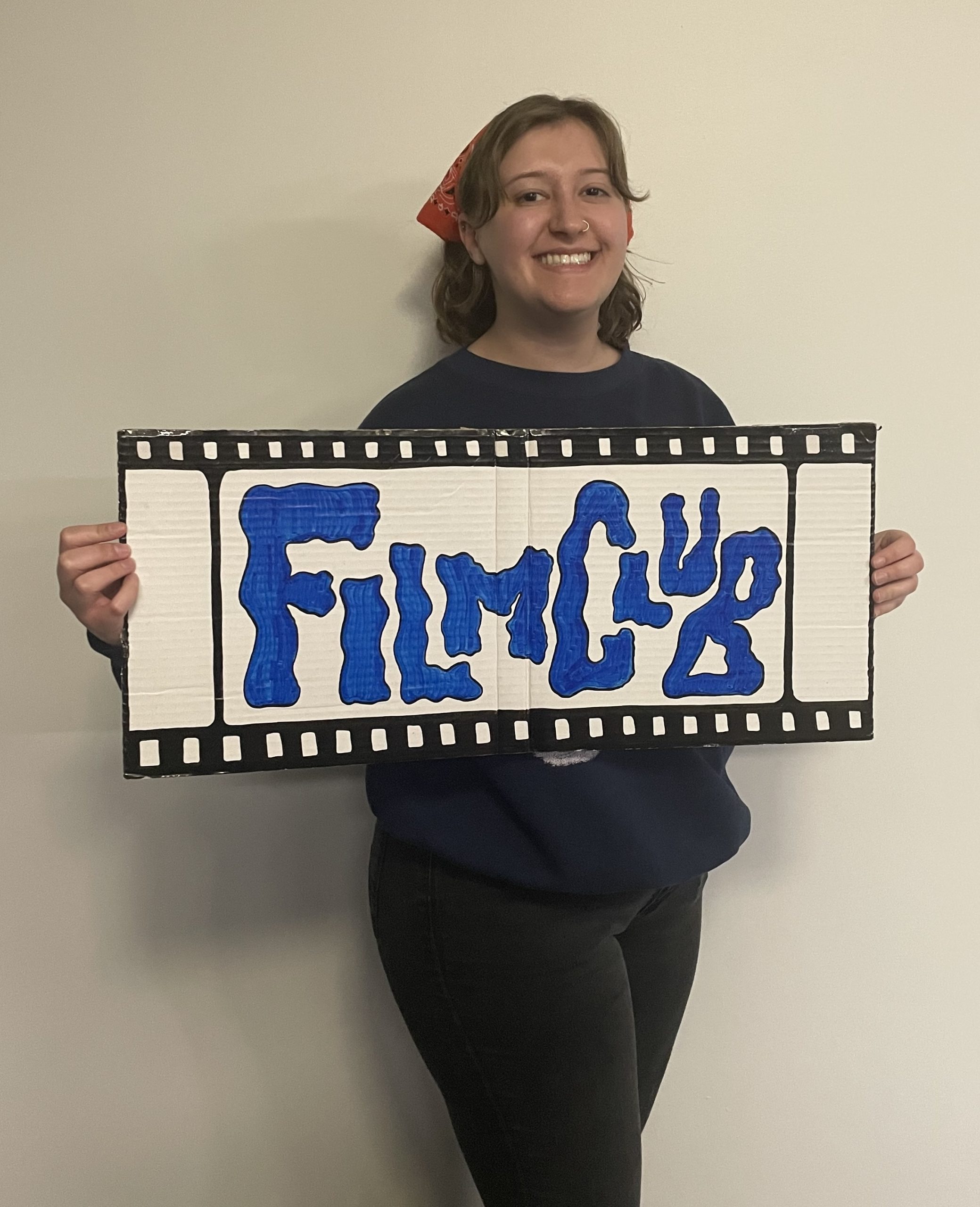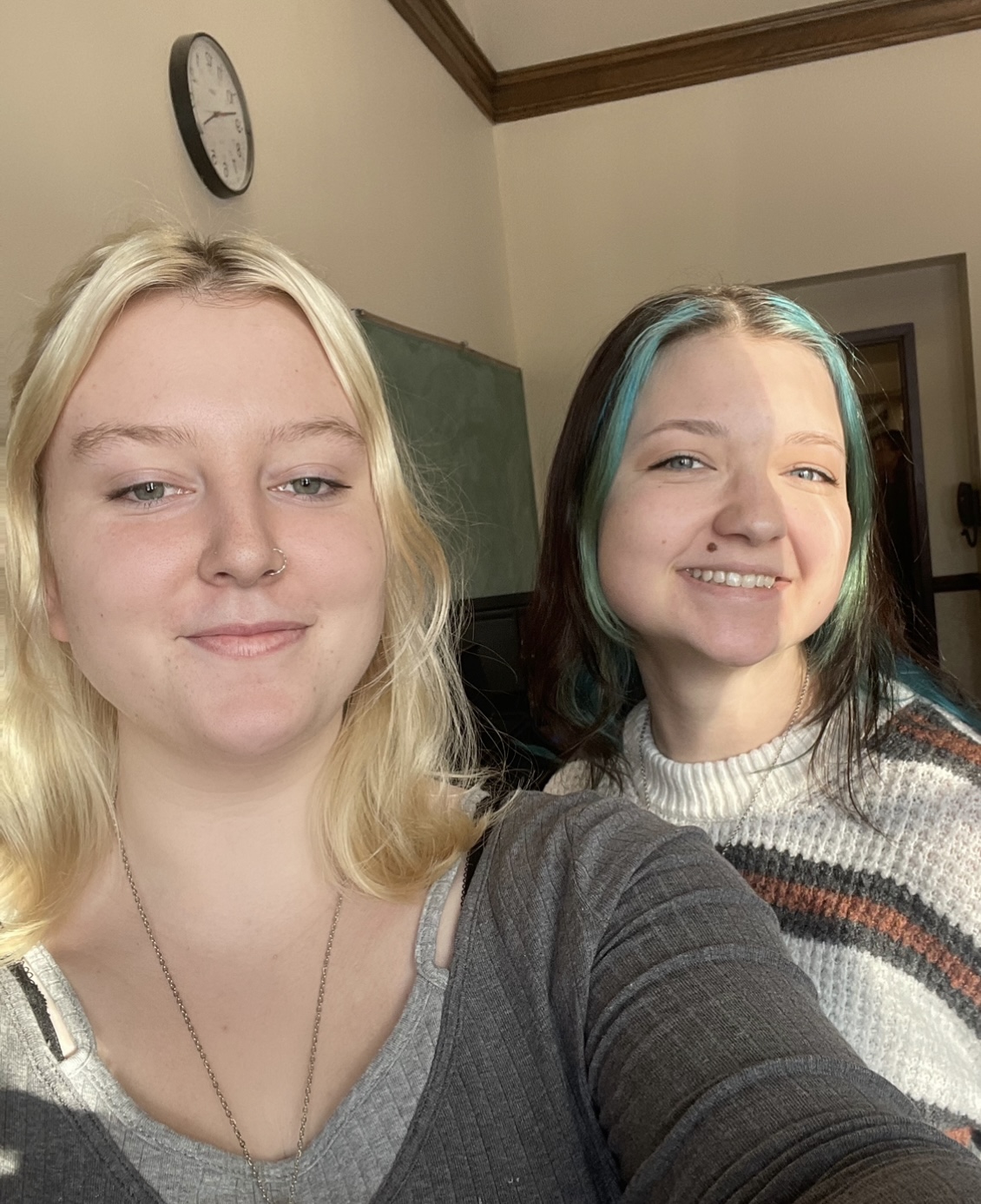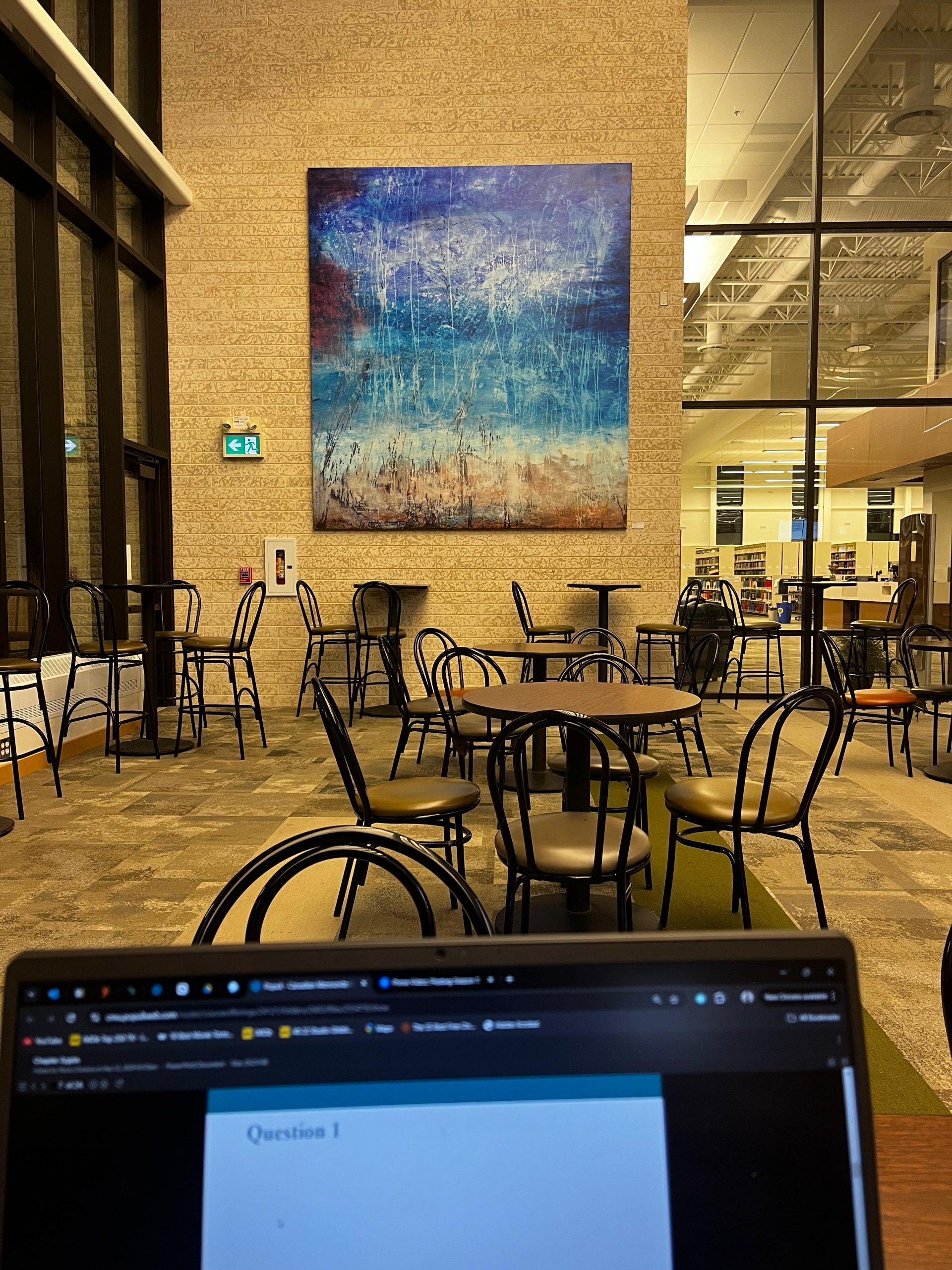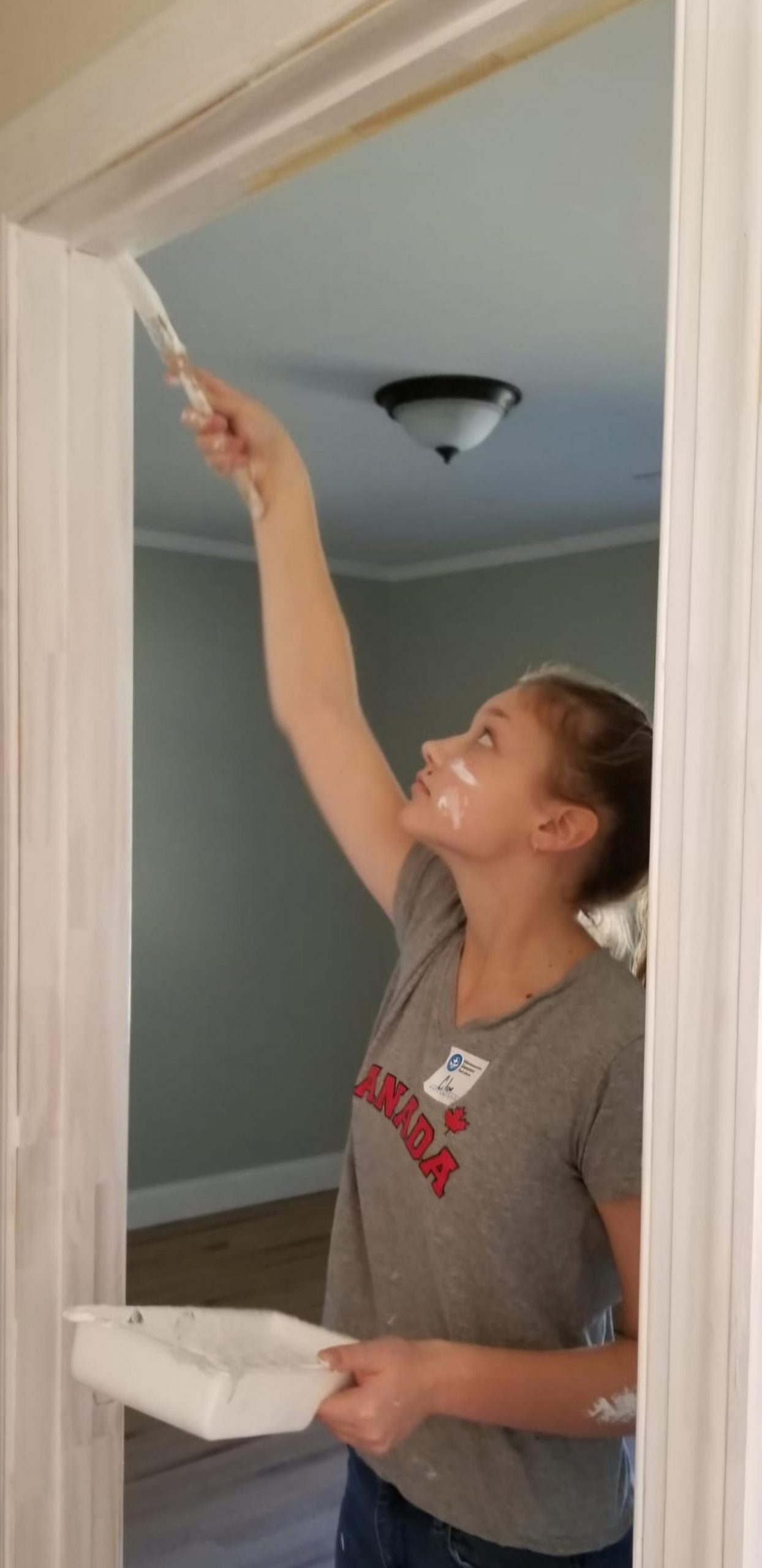Life at Canadian Mennonite University is full of unexpected lessons. Some come from professors, others from classmates, and many from late-night lounge chats or spontaneous games of hide and seek in the forest. For CMU students Ella, Jewels, and Adalynne, living and learning on campus has been just as much about personal growth as it has been about academics.
Ella doesn’t just participate in student life—she’s practically the poster child for it. “How much time do you have?” she joked, before listing off an impressive roster of roles: soccer and futsal player, Indigenous student leader, Equity, Diversity, and Inclusion volunteer, member of the Music Student Association, CMQ, Arts and Entertainment, and the list goes on. Somehow, she does it all and still manages to sound genuinely joyful about it.
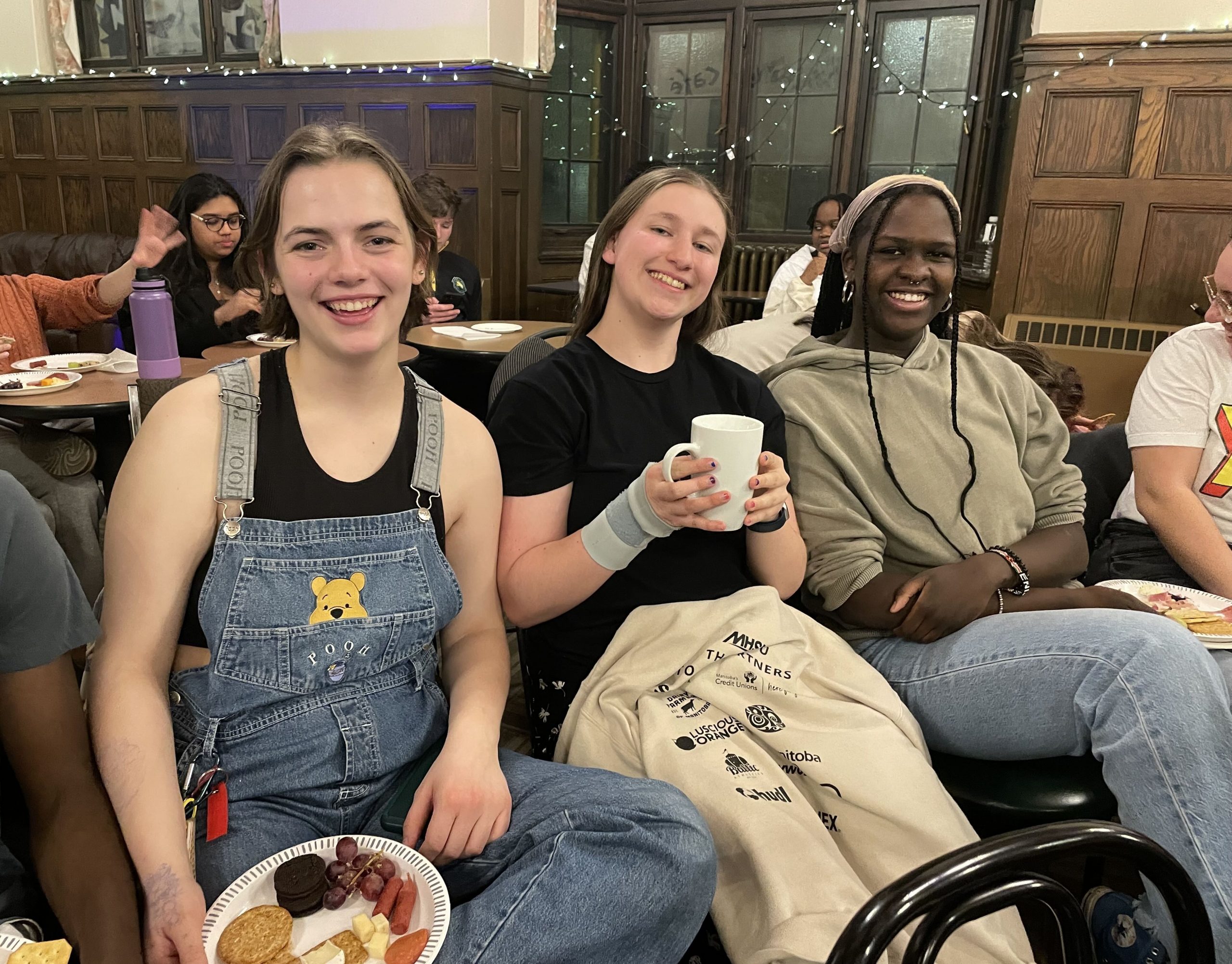
Jewels keeps busy too, but with a slightly different flavour. She works as a barista at folio café on CMU’s campus and sings in two CMU choirs. Adalynne brings a thoughtful energy to their many contributions. They’ve volunteered in the student-run Blaurock Café and Meraki Maker Space, performed at coffeehouses, and played in the Mennonite Community Orchestra. “It’s been a really nice experience,” they said simply, the kind of understatement that hints at something richer beneath the surface.
Dorm life, while not without its challenges, has shaped them all in meaningful ways. For Ella, it was a surprising source of friendship. “I somehow stumbled into a great friend group,” she said. Being an introvert, she wasn’t expecting it. “Living in a space with people forced me to socialize, which helped me make connections in a place where I knew nobody.”
Jewels described it as deeply educational. “I’ve learned a lot about other people and a lot about myself in ways I didn’t know I was going to,” they said. From late-night conversations to quiet, shared moments with a roommate—Adalynne—Jewels has come to appreciate how much growth can happen when people are simply nearby.
The social landscape at CMU also includes the ridiculous and the ridiculously fun. Jewels shared stories about impromptu Nerf gun battles and forest-wide editions of the tag game, manhunt. “These are the fun things that just happen when you live on campus.” She also touched on the vulnerability of it, how hard it is to hide your struggles when you’re always visible. “You’re on display, good and bad, to many different people.”

Adalynne pointed out the beauty in the everyday. Dinner table debates, casual TV nights, the quiet moments where you realize who you want to spend time with, and who becomes your emergency contact when life gets heavy. “At any given point, you can knock on someone’s door and say, ‘Hey, do you have a moment?’” That kind of connection, they said, is heightened when you live on campus rather than commute.
Ella, who roomed with someone she didn’t know beforehand, had her own perspective. “I love Annie. We’re like besties now,” she said. “But at the beginning it was scary. Move-in day is a lot.” Still, she trusted her gut, took the bottom bunk, and it worked out. “Everyone in our hallway who didn’t know their roommate going in feels the same way [as me]. It’s very lovely.”
Self-expression has evolved for all three of them during their time at CMU. Ella spoke about becoming more comfortable with her Indigenous identity, and learning to say no. “I still have some people-pleaser problems,” she laughed, “but I feel like here, I can just do whatever and it’s fine.”
For Jewels, change came in subtler ways. “I dress up as a different Dungeons and Dragons character every day now,” they explained, noting how university opened space to explore more authentic parts of herself. “I’m a fuller, [more] whole person here.”
Adalynne talked about vulnerability. Living in community gave them the opportunity to open up in ways they hadn’t before. “There’s always something new to discover,” they said. Being away from family pushed them toward independence, and the abundance of campus activities created opportunities to learn what they care about. “There’s so many things happening on any given day. So many ways to connect and figure out what inspires you.”
Jewels summed up the adjustment with a kind of gentle honesty. “It’s a weird experience, stepping away from your family for the first time.” But CMU, they said, was the ideal safety net. “It already feels like [staff and faculty] know the floor is dropping out from under you and they’re here for you.”
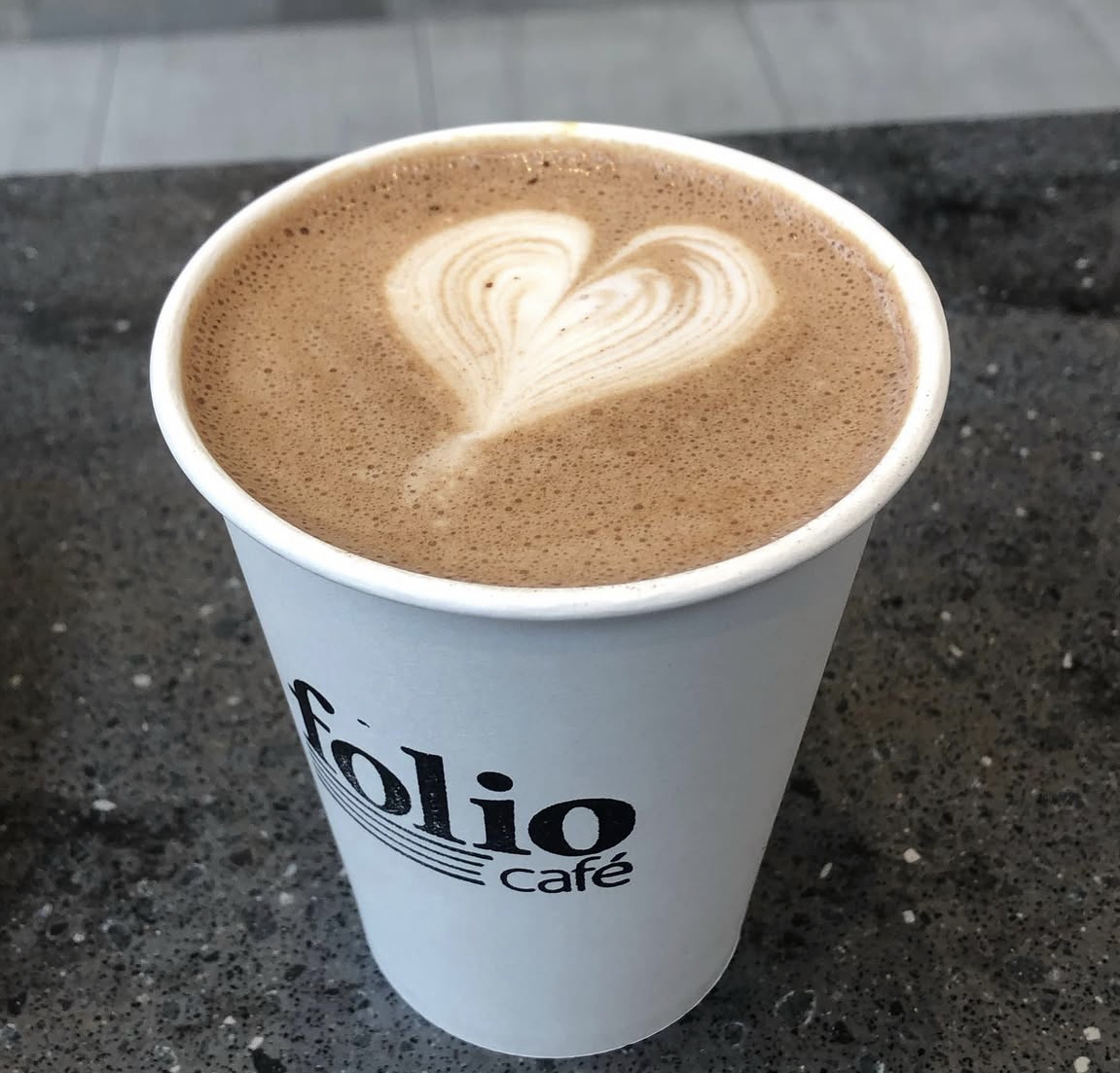
When asked why someone should come to CMU, Jewels didn’t hesitate. “If you’re looking for a space to belong, I think you should choose CMU.” She spoke of being known and cherished, and how professors care not just about grades but about who students are. “They all live up to their titles. They profess. It’s inspiring. Also, if you come to CMU, I’ll make you a coffee.”
Adalynne added that the care goes beyond the classroom. “Even people I haven’t interacted with much will stop and ask [how I’m doing],” they said. “There’s a general sense of who everyone is. You can always say hi.”
Ella put it simply. “It feels like an experience, not just school,” she said. “You’re here for the ride, and the schoolwork’s just along for it.” She compared her week at CMU to a friend’s week at another university. “They had classes and went home. I had root beer floats, a tie-dye event, a forum on environmental issues, and a Kahoot.”
Even the professors don’t keep their distance. Adalynne laughed while describing how casually staff and faculty interact with students. “It feels normal to say hi to Cheryl Pauls in the hallway,” they said. “And then you remember, wait—she’s the president.”
There’s no single way to sum up CMU, but if there’s a common thread running through these stories, it’s this: community is something that grows when people show up for each other. And at CMU, they really do.
Emma Williamson is a second-year Bachelor of Arts student, majoring in English.

